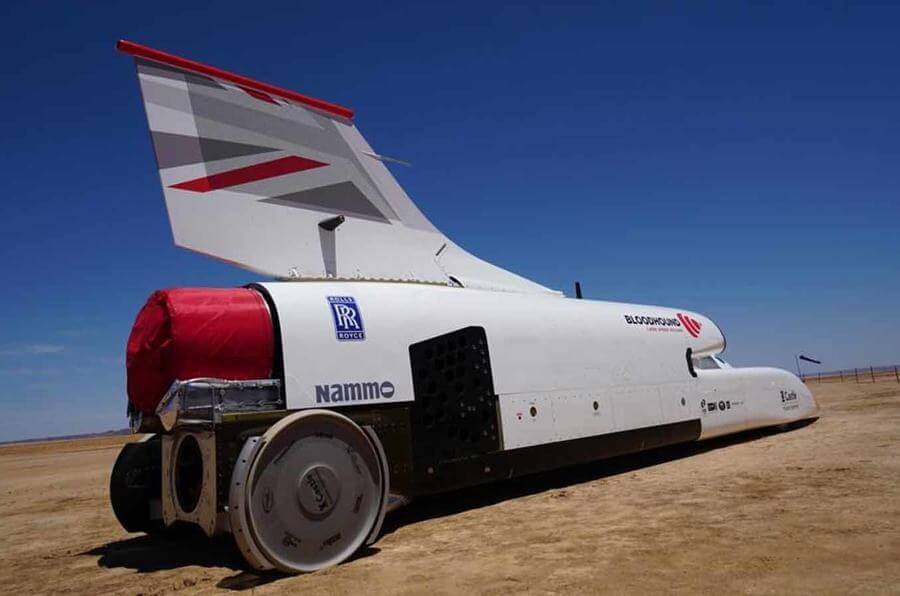In brief: The Bloodhound LSR car, which aims to reach 1,000mph, took a step toward that land speed record yesterday when it broke the 500mph barrier during its latest test run in South Africa’s Kalahari desert.

The project almost collapsed last year when it was put on hold while seeking new investors after the team ran out of funds. It was engineering millionaire Ian Warhurst who rescued the Bloodhound with a seven-figure investment, reports Autocar.
Past troubles were forgotten this week as RAF Wing Commander Andy Green reached 501mph on the 12.4-mile Hakskeen Pan track. The test didn’t run completely smoothly: a fire warning alert sounded during the engine shutdown procedure, but it was a false alarm caused by the 36-degree temperature and heat from the engine.
#BloodhoundLSR has just gone 501mph! #2019HST pic.twitter.com/HL3Fraid2M
— Bloodhound LSR (@Bloodhound_LSR) 6 November 2019
The Bloodhound team hopes to break the current land speed record of 763mph, which was set by Green back in 1997, and eventually reach that ambitious 1,000mph target. It's aiming to hit 550mph in the next few days.
The car features the same Rolls-Royce EJ200 gas turbine engine used by the Eurofighter Typhoon plane, which gets it to 600mph. A number of hybrid rockets that come from Nammo, a Scandinavian defense contractor, will be used to go even faster.
The latest test saw the car use solid aluminum wheels for the first time, which handle the extreme speeds better than rubber tires. But there are plenty of challenges when driving at 200mph and above, including a lack of grip and being able to stop before running out of track.
“We’ll be testing a two-parachute braking system, and of course we have friction brakes that work best below about 200mph. On top of that, we’ll do handling tests and investigate stability changes. And we have to see how well the team can perform under pressure in heat that might hit 40deg C," said Engineering Director Mark Chapman.
The team will attempt to break the current record next year—no word on when it might try for that 1,000mph target.


